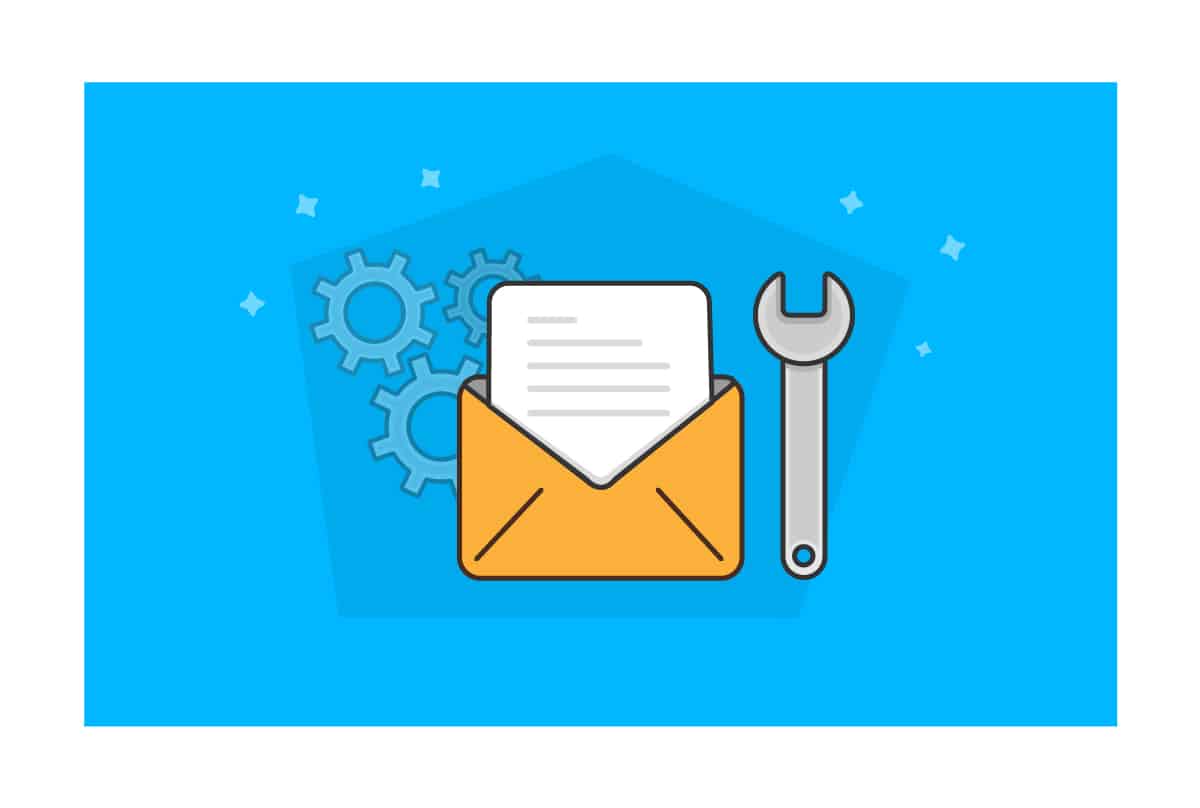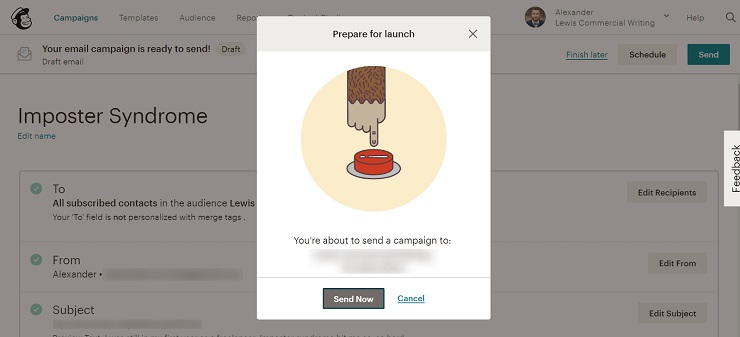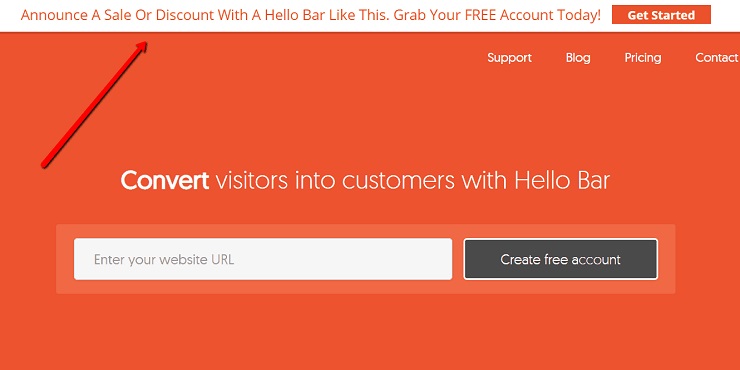When email first came around, it marketed itself. After all, to send an email, you needed to first convince someone else—a friend, colleague, spouse—to create their own email account.
In other words, email only worked in collaboration with other people. As a result, rapidly growing professional and social pressure skyrocketed it into everyday use in just a few years.
But email’s marketing chops didn’t stop there. Today, it is still one of the most prominent digital marketing tools.
While marketing teams can spend months trying to get in front of other people’s audiences, there’s enormous power in investing the time to cultivate your own audience. It opens opportunities for you to consistently sell products and spread ideas.
And hands down, the best way to grow an audience is via email. Digital marketers and growth hackers swear by it, emphasizing how powerful email is compared to social media marketing and other strategies. For one, email remains a platform for intimate, trusted digital interactions, a highly personal and direct conversation tool. It also remains chronological and unfiltered (except for spam), invulnerable to ever-changing social algorithms.
But how do you turn email into your own marketing advantage? And what tools do you need to really unlock email’s marketing magic?
EXCLUSIVE FREE TRAINING: Successful Founders Teach You How to Start and Grow an Online Business
An Email Marketing Veteran Shares His Top Tools
To discuss the top tools for email marketing, Foundr decided to bring in the big guns. We called upon Gleam.io co-founder Stuart McKeown. He’s an expert email marketer with years of experience helping others (and his own team) build powerful lists and campaigns, and the instructor of Foundr’s list-building course.
We asked Stuart to break down some of his favorite tools in the following video. Once you’ve listened to his recommendations directly, stick around for even more tools to help you build a successful email list and campaign.
Without further ado, let’s jump in!
Stuart McKeown’s 6 Email Marketing Tool Recommendations
Managing Your Email List
First up, we have one of the most widely used email tools on the planet: Mailchimp. Mailchimp enables users to create drag-and-drop email templates, store and organize subscriber email addresses, and even create landing pages for attracting new users. They make sending emails easy—assuming you can get past the intimidating monkey hand turning up the pressure to send an email.
Stuart also recommends Klaviyo as an audience-segmenting email tool. Klaviyo offers some overlapping features with Mailchimp, including creating auto-responsers, accessing email analytics, and more. It is catered specifically to “growth-focused brands.”
But he also points out that services like Mailchimp and Klaviyo can get expensive over time. As you list grows, you can end up paying enterprise-level prices, even as a small business. That’s why Stuart also suggests software like Sendy.
Sendy is a self-hosted email server. With Sendy, Stuart explains, “You pay once to get the license. You install it. And then you hook it up to Amazon. Amazon has an email service called Amazon SES—Amazon Simple Email Services. It’s really cheap to send emails.”
Omnisend is another strong option for ecommerce brands – especially for those looking for an all-in-one tool with email, SMS, and push notifications built in. It integrates directly with Shopify and comes with pre-built automations, making it ideal for small to mid-sized businesses that want powerful marketing features without the complexity or cost of more advanced platforms. Foundr readers can even get 50% off the first three months of a paid plan with code FOUNDR50 at omnisend.com/foundr.
Then there’s Autopilot. This tool, which Stuart uses extensively for his blog email list, adds a more visual aspect to email marketing. The tool segments subscribers based on their behavior. Different customer experiences and behaviors can result in different prompts and emails along the customer sales journey.
Stuart offers an example: If a website visitor uses one opt-in form, they receive a specific autoresponder. Then you can track what happens afterwards—did the customer open the auto response?
If so, the behavior prompts a different set of emails than if the customer had ignored it. “You can get very detailed about the ways you take people through these journeys.”
Growing Your Email List
There’s Gleam, Stuart’s own company, of course, which helps customers build their subscriber lists. They integrate with over 30 email marketing providers. You can sync your emails with Sendy, Mailchimp, and many other companies.
The tool enables you to create opt-in forms, pop-up forms, and even hosted Instagram galleries.
Stuart also recommends Postie, which pulls in and lets you curate Instagram content. Then you can link your Instagram content to certain products.
While Stuart personally recommends these tools, he’s quick to point out that there are tons of additional email apps out there. Many of them even offer free trials. Do your research to find out which tools fit your needs and which ones you feel most comfortable using.
“You don’t want list building to feel like a chore. You actually want to enjoy getting emails, sending them, and seeing the results. Make sure you find tools that align with your own workflow. Once you have that down, just have fun building your email list.”
In that spirit, we’ll now cover a handful of additional tools your business may need to grow that list.
Additional Top Tools for Email Marketing
To build on Stuart’s advice, I’ve gathered some of the most popular and powerful email marketing tools. They’re organized by category, but keep in mind that many of these listed tools offer features that cross-pollinate into other categories.
Here goes:
Tools for Collecting Email Addresses
If you want to grow an email newsletter audience, your first step should be to collect email addresses from people already visiting your website. There are many tactics for growing an email following. People have written about it for Foundr once or twice, in fact.
But if you get down to the absolute basics, you need a landing page, popup, or subscription bar that’s easy to find and incentivizes visitors to give you their contact information. Here are two tools created specifically to help you grow your email following.
For options to help you collect emails, I chose to showcase products from two famous marketing entrepreneurs. Hello Bar is a Neil Patel product. Sumo is from Noah Kagan.
If you know anything about these two entrepreneurs, you probably know that they’ve got skills growing enormous newsletter followings.
So when Noah Kagan and Neil Patel each launch competing products that help you grow your list, it’s time to sit up and take notice.
Sumo: This tool is a plugin to your website. It allows you to create popups, subscription bars, and other tools to help you catch the attention of website visitors and convert them into happy subscribers or customers. Sumo connects directly with top email apps. In other words, every new subscriber can be automatically added to your email list in Mailchimp or Constant Contact (more on this one later).
Hello Bar: Again, the goal for Hello Bar is to help you grow an email list, convert website visitors into subscribers or customers using a small bar at the top of your website.
Hello Bar also uses popups and various subscription screens and bars to nudge people toward giving you their email address. And like Sumo, Hello Bar connects with popular email apps and tools to streamline your email collection and newsletter growth.
Newsletters and Email Marketing
The same elements that make email perfect for engaging a following also makes email a powerful tool for turning subscribers into paying customers.
Here are some great conversion-oriented email tools:
Constant Contact: Another go-to newsletter service, Constant Contact provides many of the key features already mentioned about Mailchimp: newsletter templates, email list storage/organization, registration forms, and more.
Drip: Drip is a few tools rolled into one. More specifically, it is a CRM and an email automation tool. The tool allows you to split test, automate email campaigns, and create opt-in forms to grow your following.
ConvertKit: This email automation tool empowers your marketing by helping you segment, email, and sell to your customers. Use ConvertKit to build sales funnels, attract new leads, and create drip email campaigns that turn subscribers into buyers.
Campaign Monitor: In their own words, Campaign Monitor helps you “create, send and measure the impact of your email marketing campaigns.” This tool uses drag-and-drop functionality that enables you to design and customize the marketing emails you send to clients.
Cold Outreach
One of the services I regularly offer clients is cold pitching research. I don’t typically send the pitch itself, but I do the research to understand who my clients should be pitching, and help them write the perfect email that will hopefully get the end user to open the email and accept the opportunity.
If you’re looking for cold-outreach email tools, you may want to try one of these:
Snov.io: Use this tool to help you research contacts and send that high-pressure pitch. Snov.io provides domain email search, email verifier features, drip campaign functions, and email open trackers. The tool helps you from research to cold email execution.
Mailshake: This tool helps your team “send personalized cold emails at scale.” Through many of the tools mentioned above, Mailshake helps you research clients, find email addresses, and use email marketing tools to increase conversions. Plus, it offers reminder tools when cold outreach goes beyond email: set reminders to engage your contacts on social media or via phone.
EXCLUSIVE FREE TRAINING: Successful Founders Teach You How to Start and Grow an Online Business
Which Tools Are Best for Your Team?
Stuart McKeown provided some awesome recommendations for getting started in email marketing, and I’ve added in some additional options. But the best way to know which tools are best for your team is to shop around. Look for the features, usability, and prices that work best for your team.
As you build your list or research your cold pitch, having the right email marketing tools can make your life simpler. Hopefully this article introduced you to one or all the tools you need.
What’s your favorite email marketing tool or hack? Share it with the rest of us in the comments.


















